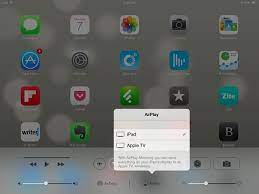How to turn off airplay on your iPhone, iPad, or Mac? Do you ever use Airplay to share content from your iPhone, iPad, or Mac with other devices? If so, you may have wished there was an easy way to turn it off. Airplay can be a great tool for sharing photos, videos, and music with friends and family, but sometimes you may not want others to see what’s on your screen. This article will show you how to turn off Airplay on your iPhone, iPad, or Mac in just a few simple steps.
Table of Contents
What is Airplay, and why would you want to turn it off?
In your house, you probably have many devices that can connect to the internet. Your phone, computer, and maybe even your television can connect to the internet. Airplay is a tool that lets you share what’s on your screen with other devices. If you’re watching a movie on your laptop, you can also watch it on your TV without transferring the movie file to your TV. Airplay is useful for streaming content from one device to another, but sometimes it’s not so useful. For example, if you’re playing a game on your phone and someone else in the room wants to use their phone or laptop, they might not be able to because Airplay is broadcasting the game from

Airplay is a feature that allows you to wirelessly stream audio and video from your Apple devices to compatible speakers, TVs, and more. While it’s a handy feature to have, there are times when you might want to disable it.
For example, you might be watching a movie on your iPad and not want anyone else to be able to hear the audio. Or maybe you’re playing music on your iPhone in public and don’t want people to connect to your device and start blasting their tunes.
Are there any benefits to turning Airplay off on your devices?
When you first hear about Airplay, it sounds like a great idea. After all, who wouldn’t want to be able to easily share pictures and videos with family and friends? However, there may be some benefits to disabling Airplay on your devices. Read on to find out more.
One potential benefit of turning off Airplay is increased privacy. When Airplay is turned on, anyone within range can access your device’s content.
Another benefit of disabling Airplay is battery life. When Airplay is turned on, your device’s battery drains more quickly. This is because your device constantly searches for Airplay-compatible devices and sends out a signal. If you’re worried about conserving your battery life, turning off Airplay may help.
Finally, some people simply find Airplay to be annoying. If you dislike having your content constantly shared with those around you, disabling Airplay may be the best solution.
So, a few potential benefits to turning off Airplay on your devices exist. If you’re concerned about privacy, battery life, or just want to reduce the amount of sharing happening on your devices, disabling Airplay may be the best option.
How do you turn Airplay back on if you change your mind later on?
Just follow the same steps above to access the Airplay menu, and select the device you want to stream audio to. That’s all there is to it! Whether you’re using Airplay to listen to music on your Apple TV or just want to keep your iPhone’s audio private, we hope this quick how-to was helpful. Thanks for reading.
How to turn off Airplay on your iPhone or iPad
Airplay is a great feature on your iPhone or iPad that lets you share what’s on your screen with other Apple devices.
If you’re anything like me, you use your iPhone or iPad to watch TV and movies. And if you’re using an iPhone or iPad to watch TV and movies, you’re probably using Airplay. But what if you don’t want to use Airplay? Just follow these steps.
On your iPhone or iPad, go to Settings.
Tap AirPlay & Handoff.
Turn off AirPlay.
And that’s it! Now you can watch TV and movies on your device without having to worry about Airplay.
How to turn off Airplay on your Mac
When you are done using Airplay, it is helpful to turn it off. This will stop your Mac from broadcasting and save on battery life. This tutorial will show you how to turn off Airplay on your Mac.
Do you ever use Airplay to project what’s on your Mac screen to a larger screen, like a TV? Here’s how to turn it off. It’s really easy! First, open the System Preferences application. This is the app with the icon of a grey gear that you’ll find in your Applications folder. When the System Preferences window opens, click on the Displays icon. The bottom part of this window will show two options: Mirror displays and Extend desktop to this display. If Airplay is turned on, Mirror displays will be checked, and Extend desktop to this display will be unchecked. Just uncheck Mirror displays, and Airplay will be turned off. You can then close the System Preferences window. That’s all there is to it!
Now you know how to turn off Airplay on your iPhone, iPad, or Mac. This is a really handy skill, and I’m sure you’ll find it comes in handy more often than you think. So the next time you’re watching a movie on your device and don’t want anyone to disturb you, just remember to turn off Airplay.
What to do if you can’t turn off Airplay on your iPhone, iPad, or Mac
If you’ve ever tried to turn off Airplay on your iPhone, iPad, or Mac and found that it’s impossible, don’t worry! There are a few things you can do to fix the problem. This blog post will explain what to do if you can’t turn off Airplay. We’ll also tell you about some of the benefits of using Airplay. Keep reading for more information.

First, ensure your device is connected to the same Wi-Fi network as your Apple TV or AirPlay speaker. If it’s not, you won’t be able to turn off Airplay. Second, check to see if Airplay is turned on in the Control Center on your device. To do this, swipe up from the bottom of the screen to open the Control Center. If you see the Airplay icon, tap it and then tap “Off.”
If you’re still having trouble, try restarting your device. This will usually fix the problem. Finally, if none of these solutions works, you can always contact Apple Support for help.
Now that you know how to turn off Airplay, you might be wondering why you would ever want to use it. After all, setting up can be a bit of a hassle. However, some benefits to using Airplay make it worth the effort.
For one thing, Airplay allows you to stream audio and video from your device to your Apple TV or AirPlay speaker. This means you can watch movies and TV shows from your iPhone or iPad on the big screen. You can also listen to music from your Mac on a wireless speaker.
Why would you want to turn off Airplay on your iPhone, iPad, or Mac?
Airplay is a great way to share what’s on your screen with others. You can show them photos, videos, or even presentations. But sometimes, you may not want other people to see what’s on your screen. In these cases, knowing how to turn Airplay off can be helpful. Keep reading to learn more! There are a few reasons why you might want to turn off Airplay on your iPhone, iPad, or Mac. Maybe you’re working on a sensitive project and don’t want anyone to see it. Or maybe you’re just trying to save battery life. Either way, turning off Airplay can be helpful in these situations.
How to troubleshoot problems with Airplay on your iPhone, iPad, or Mac
If you’re having trouble with Airplay, you can try a few things. First, ensure your devices are connected to the same Wi-Fi network. Then, try restarting your iPhone, iPad, or Mac and the device you’re trying to Airplay to. If that doesn’t work, try resetting your network settings. You can do this by going to Settings -> General -> Reset -> Reset Network Settings. Finally, if none of these solutions works, you may need to update your software. You can do this by going to Settings -> General -> Software Update.








